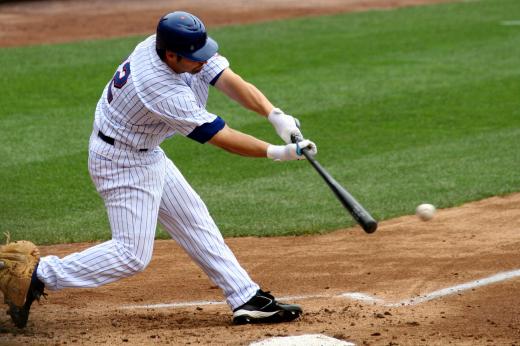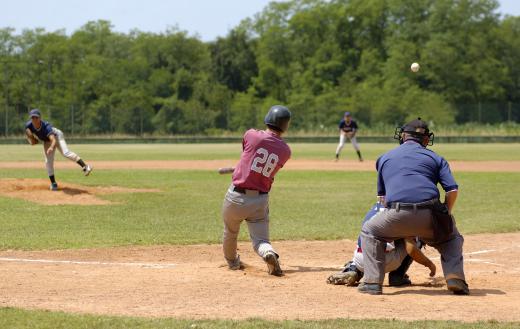At one time, baseball bats were all manufactured out of some type of hard wood, but this is no longer the case. Today, there are actually several different types of baseball bats in common use. Which ones are used most often depends on official specifications that govern the equipment that is considered the standard for all teams associated with a given league and the divisions that make up the league. This means that different bats will be in common use in a minor or amateur league that would not be allowed in a major league game.
In spite of the proliferation of differences in the bats used today, the old fashioned wooden baseball bat still tends to be the most common of all types. At one time, hickory bats were the most common variety. While providing a great deal of durability, hickory is also among the heaviest woods used to make bats.

Currently, white ash is often the wood of choice for most baseball bats, since the wood is sturdy and resists cracking under pressure. White ash also produces a bat that is light enough to allow the batter to achieve a swing of adequate speed and force, but not so light that it makes hitting a baseball out of the park an easy task. Along with white ash bats, maple is also a popular option, although this wood tends to cost a little more.

The aluminum baseball bat is of more recent vintage than wooden bats. First produced in the 1970s, aluminum quickly gained supporters, mainly due to the fact that these baseball bats are lightweight but also extremely durable. In the early years, it soon became apparent that the aluminum bat made it very easy to hit the ball great distances. The major leagues discontinued their use, mainly in order to prevent rendering previous records set with the heavier wooden bats irrelevant. Some amateur and minor leagues allow the metal bats, however, although the usage is not universal by any means.

Other designs for baseball bats have appeared over the years. The so-called Baum Bat of the early 1990s attempted to create a transition bat that would help a minor league player who is picked for a major league team to make the transition from lighter bats to a heavier wooden model. A few companies have produced and attempted to market a bat made from billets of bamboo. Ones composed of various of hardwoods continue to be the types of baseball bats favored by the majority of players across the board, however.
